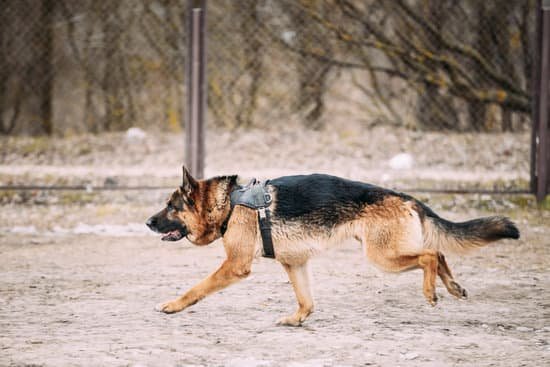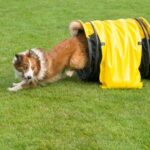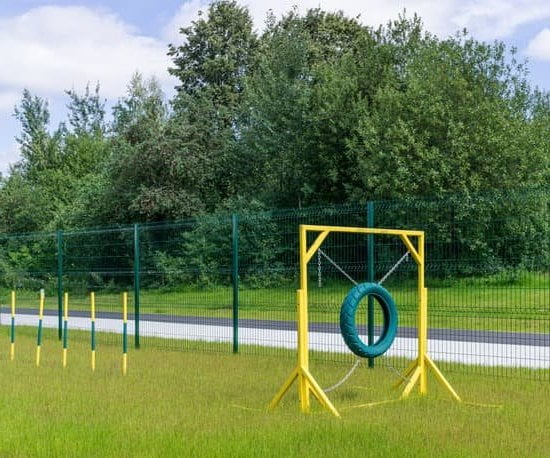Potty training a blind and deaf dog can present unique challenges, but with the right approach and techniques, it is possible to achieve success. In this article, we will explore how to potty train a blind and deaf dog using scent and touch cues, creating a safe potty area, establishing a consistent schedule, and incorporating positive reinforcement techniques.
Understanding the challenges of potty training a blind and deaf dog is crucial in developing an effective training plan. Blind and deaf dogs rely heavily on their sense of smell and touch to navigate the world around them, which means traditional training methods may not be as effective. This requires patience, creativity, and a deep understanding of your dog’s needs and capabilities.
Using scent and touch cues is essential in communicating with a blind and deaf dog during potty training. By using specific scents or textures in designated potty areas, you can help your dog understand where it is appropriate to eliminate. Additionally, incorporating hand signals or vibrations can create a form of communication that your dog can understand even without sight or hearing.
Creating a safe and familiar potty area for your blind and deaf dog is another important aspect of successful potty training. This area should be easily accessible, free of obstacles, and equipped with the appropriate scent or texture cues. Additionally, maintaining consistency in the location of the potty area can help your dog establish routines and habits for eliminating in the right place.
The Importance of Using Scent and Touch Cues in Training
Training a blind and deaf dog to use the potty comes with its own set of challenges, but it is definitely achievable with the right approach. One important aspect of potty training a blind and deaf dog is the use of scent and touch cues. Since these dogs heavily rely on their sense of smell and touch to navigate their surroundings, incorporating these cues in the training process can be highly effective.
Understanding Scent Cues
Scent cues play a crucial role in potty training a blind and deaf dog. By using specific scents to mark the designated potty area, you can help your dog understand where they are supposed to go. This can be achieved by using urine-soaked cotton balls or other scented markers to create a strong olfactory cue for your dog.
Utilizing Touch Cues
In addition to scent cues, utilizing touch cues can also aid in communicating with your blind and deaf dog during potty training. For example, gently guiding your dog to the designated potty area through tactile prompts can help them understand where they need to go. Using different textures or surfaces for the potty area can also provide tactile signals for your dog to recognize.
By understanding the importance of using scent and touch cues in training, you can create an environment that is conducive for potty training a blind and deaf dog. It may require patience and persistence, but with consistent use of scent and touch cues, you can effectively communicate with your dog and facilitate the potty training process.
Creating a Safe and Familiar Potty Area for Your Dog
Potty training a blind and deaf dog presents unique challenges, but creating a safe and familiar potty area is essential in helping your dog navigate the process. Since your dog relies heavily on their sense of touch and smell, it’s important to choose a designated potty area that is easily accessible and easy for them to locate.
Whether it’s a specific spot in your yard or a designated area indoors, consistency is key in establishing this safe space for your dog.
One way to create a familiar potty area for your blind and deaf dog is by using different textures to help them navigate. For example, if you’re designating an area indoors, consider using artificial grass or textured mats to differentiate the potty area from the rest of the space.
Outdoors, you can use gravel or other textured surfaces to achieve the same effect. By introducing these tactile cues, you can help your dog understand where they should go to relieve themselves.
In addition to utilizing texture cues, it’s also important to keep the potty area free from obstructions that could pose potential hazards for your blind and deaf dog. This means removing any obstacles such as furniture, toys, or other items that could get in the way of their path. By creating an unobstructed and safe environment for your dog, you can set them up for success in their potty training journey.
Establishing a Consistent Potty Schedule for Your Dog
Potty training a blind and deaf dog comes with its own set of challenges, but establishing a consistent potty schedule can make the process more manageable. Since these dogs rely heavily on routine and familiarity, having a set schedule for potty breaks can help them understand when it’s time to go outside. It’s important to be patient as this will take some time for your dog to learn and adjust to, so consistency is key.
When creating a potty schedule for your blind and deaf dog, it’s essential to take their individual needs into consideration. For example, older dogs may need more frequent bathroom breaks compared to younger ones. Monitoring your dog’s behavior and keeping track of when they typically need to use the bathroom can help you establish an effective schedule that works for both you and your pet.
Using positive reinforcement techniques in conjunction with the established potty schedule can also aid in the training process. When your dog successfully goes potty at the designated time, be sure to reward them with treats or verbal praise. This helps reinforce the desired behavior and encourages them to continue following the schedule. Patience, consistency, and positive reinforcement are key elements in effectively establishing a consistent potty schedule for blind and deaf dogs.
| Blind and Deaf Dog | Potty Training |
|---|---|
| Dogs rely heavily on routine | Consistency is key |
| Monitoring individual needs | Positive reinforcement techniques |
| Patience is crucial | Frequent bathroom breaks may be needed for older dogs |
Using Positive Reinforcement Techniques in Potty Training
Blind and deaf dogs require special attention and care when it comes to potty training. One of the most effective techniques in potty training these dogs is positive reinforcement. Positive reinforcement involves rewarding your dog for exhibiting the desired behavior, in this case, going potty in the designated area.
When using positive reinforcement techniques, it’s essential to find a reward that motivates your dog. For blind and deaf dogs, this may involve using scent cues such as a favorite treat or toy that they can easily locate and enjoy. These rewards should be given immediately after your dog successfully goes potty in the designated area to create a strong association between the behavior and the reward.
Consistency is key when using positive reinforcement in potty training. It’s important to praise and reward your blind and deaf dog every time they go potty in the designated area, reinforcing the desired behavior. In addition, it’s crucial to use the same verbal cues, hand signals, or vibrations each time they exhibit the desired behavior to create a clear communication pattern for your dog.
Using positive reinforcement techniques in potty training can be incredibly effective for blind and deaf dogs. By finding motivating rewards, being consistent with praise and rewards, and maintaining clear communication with your dog, you can help them understand where they should go potty and reinforce this behavior successfully.
| Positive Reinforcement Techniques | Benefits |
|---|---|
| Finding motivating rewards | Creates strong association between behavior and reward |
| Consistent praise and rewards | Reinforces desired behavior effectively |
| Maintaining clear communication | Helps dogs understand where to go potty |
Incorporating Hand Signals and Vibrations to Communicate With Your Dog
Training a blind and deaf dog can present unique challenges, but with the right approach, you can effectively communicate with your pet and successfully potty train them. When it comes to incorporating hand signals and vibrations to communicate with your dog, it is important to keep in mind their heightened sense of touch and smell. Here are some tips for effectively using these techniques in potty training:
- Utilize hand signals: Since your blind and deaf dog cannot rely on verbal commands, incorporating hand signals into your training is crucial. Use consistent hand gestures to communicate when it’s time for potty breaks.
- Implement touch cues: Dogs rely heavily on touch, so incorporating gentle touches or taps to guide your dog towards the designated potty area can be helpful.
- Use vibrations: Your dog can feel vibrations through the floor, so consider creating a specific vibration pattern or utilizing a vibrating collar to signal when it’s time for your dog to go outside for a potty break.
By utilizing these techniques, you can effectively communicate with your blind and deaf dog during the potty training process. It may take time and patience for your pet to learn these cues, but with consistency and positive reinforcement, they will eventually understand what is expected of them.
Remember that every dog is different, so it’s essential to pay attention to your pet’s individual responses and adjust your communication methods accordingly. With dedication and effort, you can establish a strong line of communication with your blind and deaf dog, making the potty training process smoother for both you and your pet.
Troubleshooting Common Potty Training Issues for Blind and Deaf Dogs
Identifying the Root of the Problem
Potty training a blind and deaf dog can present unique challenges, and it’s important to troubleshoot any issues that may arise. One common issue is the inability of the dog to communicate when it needs to go outside. It’s crucial to pay attention to your dog’s body language and behavior to identify if there are any underlying health issues causing accidents in the house.
Using Different Training Techniques
If your blind and deaf dog is having trouble with potty training, it may be beneficial to incorporate different training techniques. For example, using scented pads or grass for your dog’s designated potty area can help them associate the scent with going to the bathroom. Additionally, using touch cues such as gently guiding your dog to the potty area can reinforce where they should do their business.
Consulting a Professional Trainer
In some cases, troubleshooting potty training issues for blind and deaf dogs may require the expertise of a professional trainer who has experience working with special needs dogs. Consulting a professional can provide valuable insights and customized strategies for addressing specific challenges that your dog may be facing during potty training.
It’s essential to seek guidance from someone with knowledge and experience in this area to ensure that you’re using effective and compassionate methods for training your blind and deaf dog.
Maintaining Patience and Persistence in the Training Process
Potty training a blind and deaf dog can be a challenging process, requiring a great deal of patience and persistence. It’s important to understand that these dogs rely heavily on their sense of touch and smell to navigate the world around them, which means that potty training will require some adjustments compared to training a dog with full sensory abilities. Here are some tips for maintaining patience and persistence in the training process:
- Understand the challenges: Recognize that potty training a blind and deaf dog will take time and effort. These dogs may not be able to signal to you when they need to go outside, so it’s important to be patient as they adjust to the training process.
- Consistency is key: Be consistent with your training methods and schedule. Using scent cues and establishing a regular routine for potty breaks will help your dog understand what is expected of them. Remember that it may take longer for these dogs to learn, so persistence is crucial.
- Stay positive: It’s important to remain positive and encouraging throughout the training process. Blind and deaf dogs rely on their owners for guidance, so using positive reinforcement techniques such as treats, praise, or tactile rewards will help motivate them during potty training.
By understanding the challenges, being consistent with your methods, staying positive, you can effectively maintain patience and persistence in the potty training process for your blind and deaf dog. Remember that every dog learns at their own pace, so celebrate small successes along the way as you work towards fully potty training your furry companion.
Celebrating Successes and Progress in Potty Training Your Blind and Deaf Dog
In conclusion, potty training a blind and deaf dog may present unique challenges, but with the right approach and techniques, it can be a successful and rewarding experience. Understanding the specific needs and abilities of your dog is crucial in creating an effective training plan. By using scent and touch cues, as well as incorporating hand signals and vibrations, you can effectively communicate with your dog and establish a consistent potty schedule.
Creating a safe and familiar potty area for your dog is also essential in the training process. This provides your dog with a designated space where they feel comfortable relieving themselves. Additionally, using positive reinforcement techniques can help encourage good behavior and make the training experience more enjoyable for both you and your dog.
It’s important to remember that patience and persistence are key when potty training a blind and deaf dog. There may be setbacks along the way, but celebrating even small successes and progress can help keep you motivated and maintain a positive attitude throughout the process. With dedication and effort, you can achieve success in potty training your blind and deaf dog, strengthening the bond between you while providing them with necessary skills for their well-being.
Frequently Asked Questions
Can You Train a Blind and Deaf Dog?
Training a blind and deaf dog requires patience, creativity, and a lot of positive reinforcement. Using touch and scent cues, along with hand signals, can help them understand commands and learn obedience. It’s important to establish a consistent routine and use gentle methods to build their confidence and trust.
How Do You Train a Deaf Dog Not to Pee in the House?
When training a deaf dog not to pee in the house, it’s essential to focus on positive reinforcement and consistency. Setting up a regular bathroom schedule, using visual cues such as hand signals or flashing lights to indicate potty time, and supervising them closely indoors can help prevent accidents.
It’s also crucial to clean up any accidents thoroughly and avoid punishment-based training methods.
What Do You Do With a Blind and Deaf Dog?
Caring for a blind and deaf dog requires making adjustments to their environment to ensure their safety and well-being. This may include using tactile paths or rugs with different textures to help them navigate the home, providing them with a comfortable and secure sleeping area, and using scented markers or bells on doors or furniture.
Building a strong bond through positive interactions is also crucial for their mental and emotional health.

Welcome to the blog! I am a professional dog trainer and have been working with dogs for many years. In this blog, I will be discussing various topics related to dog training, including tips, tricks, and advice. I hope you find this information helpful and informative. Thanks for reading!





